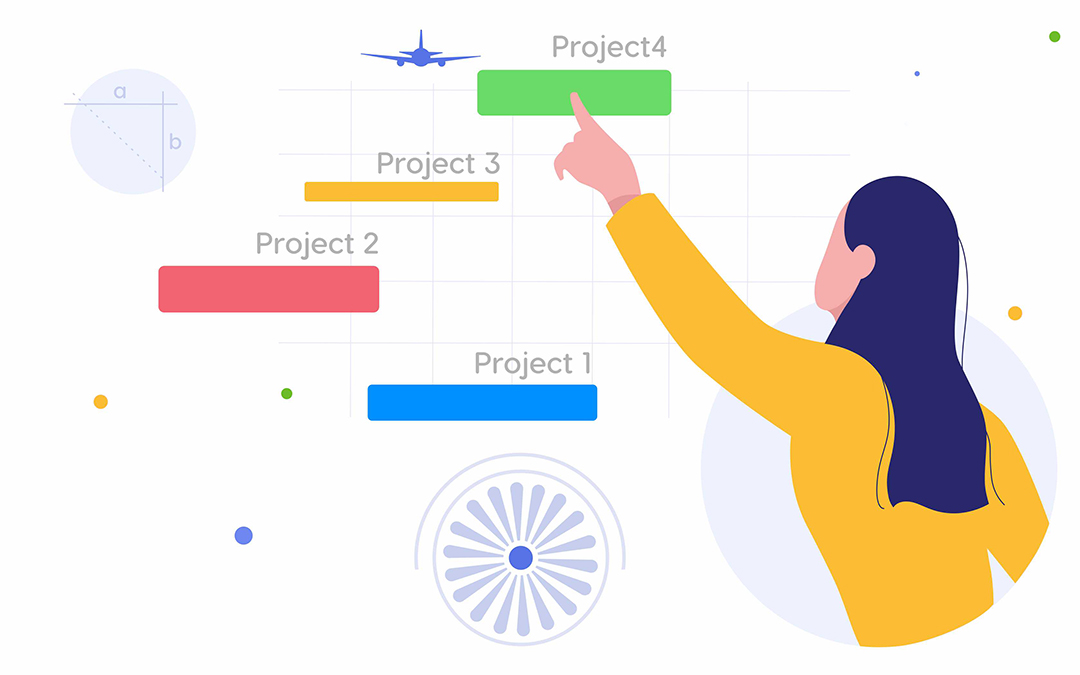Project management in aerospace engineering deals with large-scale complex initiatives that require perfect coordination between all the parties involved. In addition, typical project management challenges such as resource conflicts, uncertainty, changing requirements, etc. also remain in place for project management in aerospace industry.
How to cope with all this complexity and deliver high-quality projects without being overwhelmed? One of the solutions for efficient aerospace project management is leveraging an effective resource management tool.
Read further to learn about its potential to simplify aerospace engineering project management.
Managing Projects in Aerospace Engineering: Main Characteristics
To understand better how an RM solution contributes to the seamless flow of aerospace engineering projects, let’s consider some of their peculiarities that an aerospace project manager often has to deal with.
Changes to a developed product
It’s impossible to deliver a project without making any changes to its scope, especially when it comes to engineering projects. Changes to a developed product are inevitable, however, they turn into challenges when they get out of control and there are several sources of truth. Frequent or late changes to aerospace engineering projects can result in rework in a best-case scenario, but most often in delivery delays, increased project costs, and, consequently, disengaged employees and disappointed customers. So, a project manager has to keep an eye on every change suggested to an aerospace engineering project to make sure that it’s on track.
Increasing number of projects
At present, multi-project management is typical for large and fast-growing companies, and the aerospace engineering sector is no exception. This is explained by its intense development that involves increased digitalization and the need to implement various innovative solutions (e.g., digital twin and digital thread, the introduction of new propulsion systems and alternative energy sources, etc.). This means that the number of initiatives and their complexity will be growing, and a project manager will have to juggle these numerous complex projects, their shared resources, and dependencies between them.
Distributed teams
The pandemic has got us used to remote work, which has significantly expanded employment opportunities and in many cases has made it possible to hire experts regardless of their location. However, bringing together a project team with its members scattered around the country or even the globe can be rather troublesome. First of all, a project manager has to ensure that every team member clearly understands their contribution and role in a project. Secondly, it can be rather challenging to achieve effective collaboration between the members of remote teams, as they lack real-life communication and may even have cultural differences, which often results in misunderstandings. Therefore, ensuring remote teams’ efficiency will require additional effort.
Read more: 4 Tips on How to Manage Globally Distributed Teams with Maximum Efficiency
Lack of resources for project management in aerospace
Increasing digitalization of aerospace engineering requires the so-called digital talent, i.e., people who are skilled enough to work with the latest technological solutions. However, the research by McKinsey states that there are certain talent challenges in the aerospace and defense industry, namely:
- a competition for tech-savvy employees as a result of growing demand for them across companies;
- inability to train the digital workforce as quickly as needed.
The same can be said about resources required to implement other innovations in aerospace engineering. So, finding the right people to staff these projects can be rather difficult.
Fortunately, a reliable resource management solution can provide a great assistance in handling these issues in project management for aerospace. Let’s examine how it works in the next section.
How an RM Solution Contributes to Seamless Flow of Aerospace Engineering Projects

Efficient management of a multi-project environment
The right prioritization is the cornerstone of successful project and resource management. Whether you manage a multi-project environment with its resource conflicts and dependencies between projects and tasks, or decide what project your critical employee should be assigned to – prioritization will show you what matters most for a moment.
As we’ve noted earlier, aerospace engineering companies tend to intake more and more projects, so, it will be impossible to work on them all without setting the right priorities. An RM solution that has prioritization capabilities analyzes resource constraints and dependencies between tasks to determine which of them has to be completed first and foremost. So, a project manager along with each team member will always know what they should work on at the moment – this information is always available in the system.
One more important thing: the right prioritization can improve you team members’ productivity. Without priorities, it’s very easy to get stuck in bad multitasking or become overwhelmed with numerous tasks. But when each team member knows what to put their effort into, the efficiency of their work increases.
Thus, automatic prioritization contributes to efficient management of a multi-project environment and increases team members’ productivity.
Maximum efficient resource allocation
Efficient resource allocation in aerospace engineering projects is complexified by resource shortages and conflicts, increasing number of projects, and the need to work with distributed resources. However, this processes can be significantly optimized with a resource management tool. Let’s explore how it facilitates efficient resource allocation.
- Providing information on each employee’s skills, capacity, and availability.
It’s especially important for project and resource managers working in large organizations with hundreds or even thousands of people as well as for those who work with distributed teams – all the information necessary for resource allocation is always available at hand.
Also, when an RM solution integrates with a human resource management system, a project/resource manager can access the data on people’s days off or sick leaves in a few clicks.
- Suggesting resource allocation options.
An RM solution can analyze the above-mentioned information to suggest a perfect candidate for completing a certain task, which is a great assistance in making resource allocation decisions.
- Forecasting resource bottlenecks.
This is where an RM solution’s predictive capabilities come into play. It can analyze current distribution of tasks between employees and show what potential challenges a project/resource manager may face. For example, the current situation may lead to people’s overload – in this case, the resource should be reallocated in such a way that their workload will remain balanced.
Read more: 4 Tips on Efficient Resource Allocation in a Multi-Project Environment
Forecasting future problems and making informed decisions
AI-driven functionality of an RM solution is capable of analyzing large amount of diverse data and assist in making important decisions. Suggesting resource allocation options and forecasting future bottlenecks mentioned in the previous subsection become possible thanks to AI algorithms.
One more important AI-driven function of a resource management tool is running simulations. You can change some parameters of your current project environment (change due dates, reallocate resources, etc.) and see how these changes will affect the workflow in the future. For example, if you think of intaking one more project to your environment or consider a stakeholder’s change request, scenario analysis will allow you to take a look into the future, consider all pros and cons, and come up with the right decision.
AI-driven functionality can be also used in the situations of uncertainty or to try various options of responding to risks. Proper risk management is extremely important for aerospace engineering projects, so, running simulations is a good way to build a safety net when responding to risk-bearing situations.
These were the most essential functions of an RM solution that facilitate streamlined and efficient project and resource management in the aerospace engineering sector.
An example of resource management software for aerospace and defense is Epicflow – a tool designed for successful orchestration of a multi-project environment. It has a prioritization mechanism that lets you deliver your projects faster and will less effort; facilitates smart resource allocation and their efficient utilization; leverages the power of predictive analytics to forecast problems before they occur. And that’s not a half of its functionality. If you’d like to learn more about Epicflow and its approach to efficient multi-project and resource management, book a call with our experts.







